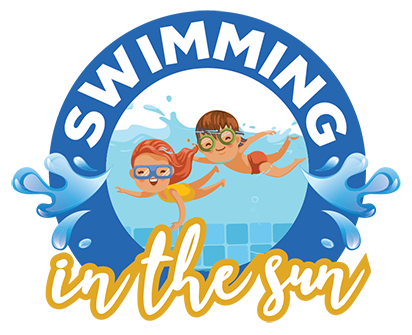What is the difference between Red Cross based swimming lessons and ISR?
I am a Certified Red Cross Water Safety Instructor. I am not a licensed ISR instructor.
ISR stands for Infant Swimming Resource. It’s origins stem from Red Cross swimming lessons. The owners of ISR developed this program and trademarked and licensed the process. Since it is based on the Red Cross training program there are many similarities, but there are also differences.
ISR works GREAT for some kids and is an absolute DISASTER for other students. It’s just a different way of teaching. I have had many siblings where ISR has been the perfect approach for one sibling, but their sibling absolutely HATED it. So they come to me and the sibling loves lessons with me and learns to swim with me instead. It just depends on their learning style and personality.
Length of classes & number of lessons per week:
ISR lessons are 10 minutes at a time 5 days a week for approximately 5-6 weeks. This results in much bigger time requirement for families on a daily basis as lessons are every single day, 5 days per week for 5-6 weeks straight. There is no making up classes if you have to miss one.
Red Cross based lessons can vary in length but tend to be at least 25 minutes long and are usually 8-10 classes in a session.
I teach 25-minute long lessons, 2x per week. I found this to be the sweet spot for most students. It’s enough consistency for students to have nice improvement as the weeks progress. There is plenty of opportunity in between lessons for students to get into a pool and practice. The more they practice the faster they will progress and the more time and money parents will save on lessons. If parents don’t have the time to take their children to a pool in between lessons it will result in more lessons in the long run.
For some students 25 minute lessons are not long enough so they book 2 back-to-back classes for a single 50-minute lesson.
Some parents are in a hurry to get their children learning faster for an upcoming vacation so they will book 2 - 3 spots a session so they can have 4 - 6, 25-minute classes per week.
My lessons are 25 minutes long, 2x per week and my sessions are 4-5 weeks long. That’s to allow parents to sign up for different days and times each session as their schedules and lives change. All students learning to swim need more than a few weeks of lessons.
Temperature of the pool:
ISR pools are kept chilly/cold. The thought is so that kids will know how to save themselves when they fall into a cold pool and not just “freeze up” and drown.
Red Cross does not dictate any pool temperature for lessons.
I keep my pool no less than 80° for lessons. I aim for my pool to be 87° for lessons, but it’s an outdoor pool so I’m at the mercy of the weather and can’t always get and keep it at that temperature. I don’t believe you need a cold pool to teach a child to swim. All that does is make them miserable and cry and not want to come to swimming lessons. I want my students to enjoy swimming and swimming lessons. I teach my students to be STRONG swimmers so if they fall into a cold pool totally dressed in street clothes they won’t give up and drown because they are cold. My students are tough and will just swim to the side of the pool and get out like it is nothing! I don’t need to train my students how to swim in a cold pool fully dressed in street clothes. I just teach them how to swim correctly and get them ready for any emergency with my custom, “drowning day” lessons, which my students LOVE. They are so much fun and really prepare them for any kind of pool emergency.
Teaching Method:
ISR’s approach is a lot of repetition in a short period of time. No toys or tools. Those are distractions. Just repetition. Crying doesn’t matter either. They teach through the tears.
Red Cross approach uses toys and tools as needed as well as demonstration and repetition.
I believe in making swimming fun. I try to distract students from their fears by using toys. I don’t want my students to cry. That is not fun. I use toys to distract students from their fears, to focus on their goals and to make it fun to learn skills that would otherwise be boring to learn. Suddenly the student can swim and no longer are afraid! I’ve got lots of unique techniques and tools you’ll only see in my pool and in my lessons that I’ve developed over years of teaching hundreds/thousands of students of all ages, abilities and learning styles. I still end up with students for whom I need to create yet another new approach. I don’t give up until I figure out the best way to teach each and every one of my students so they learn in their best, most fun way.
